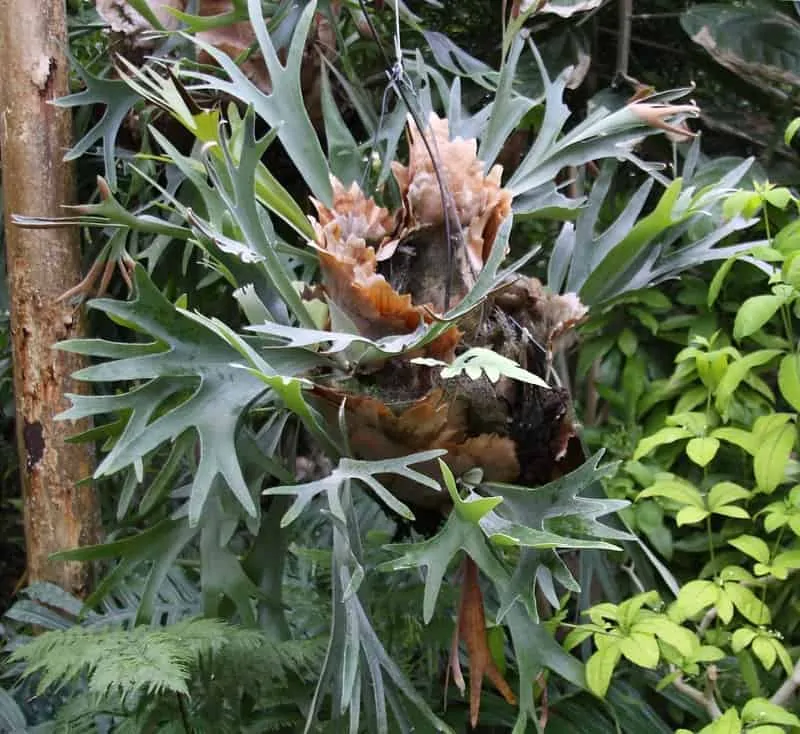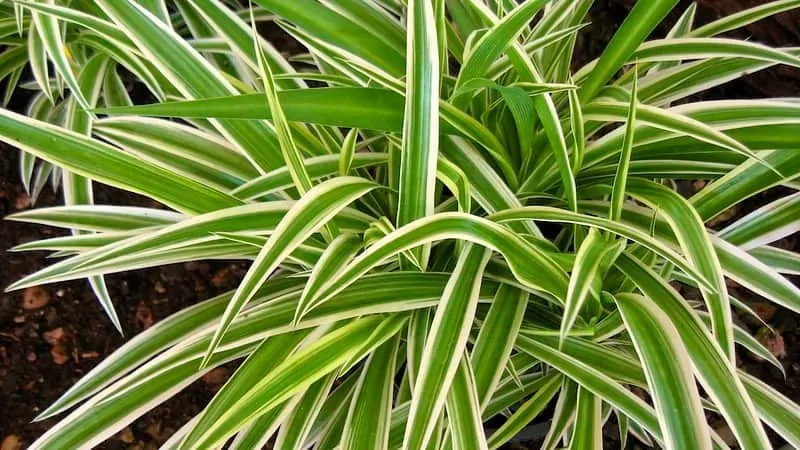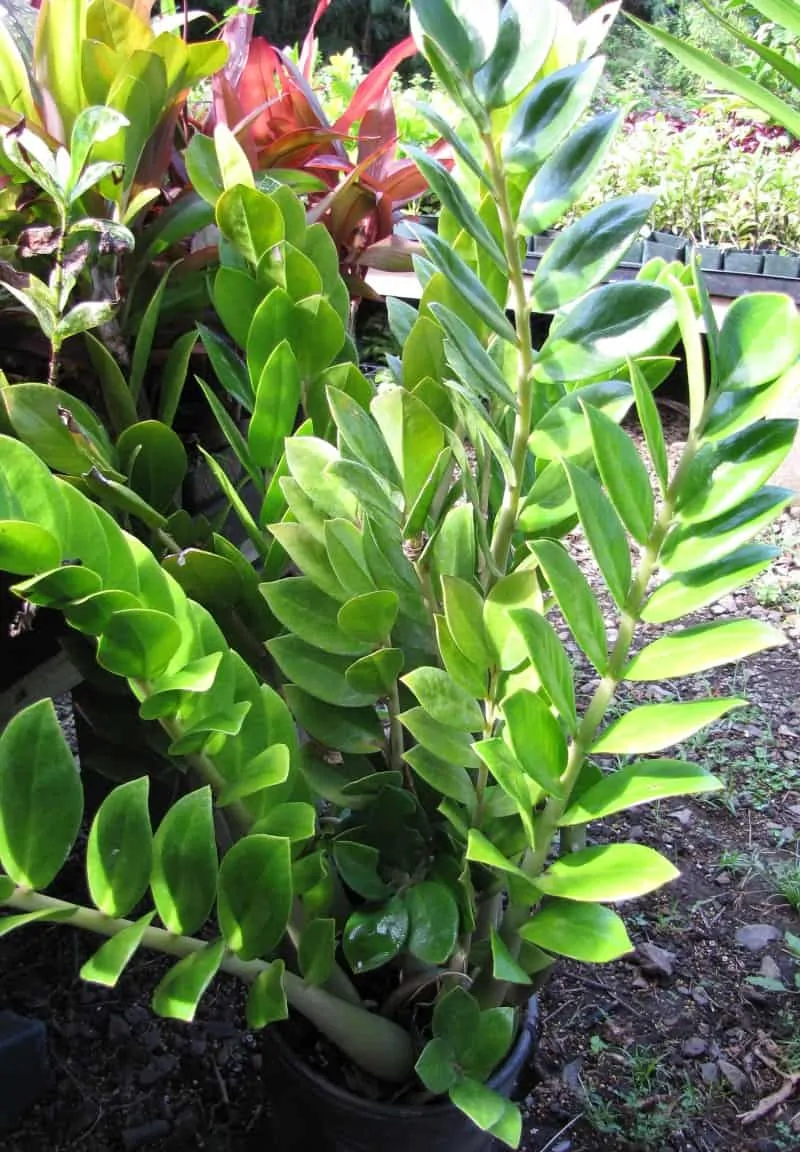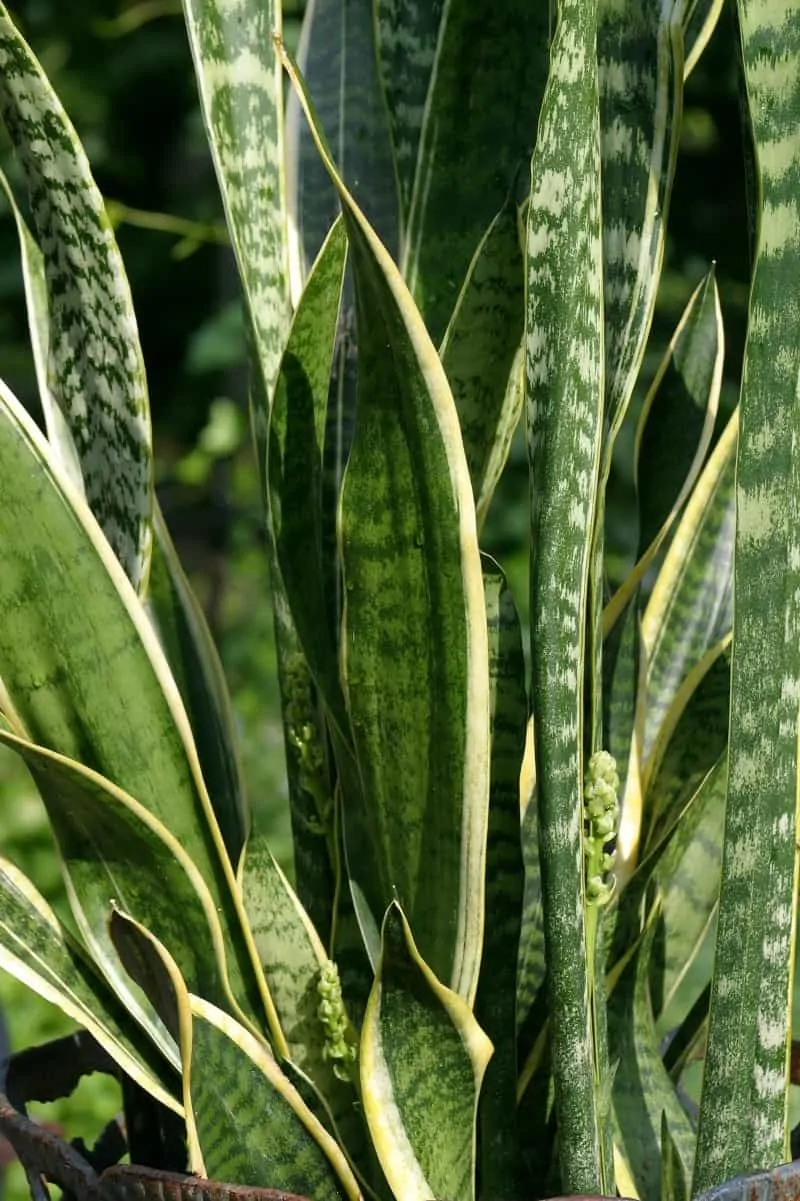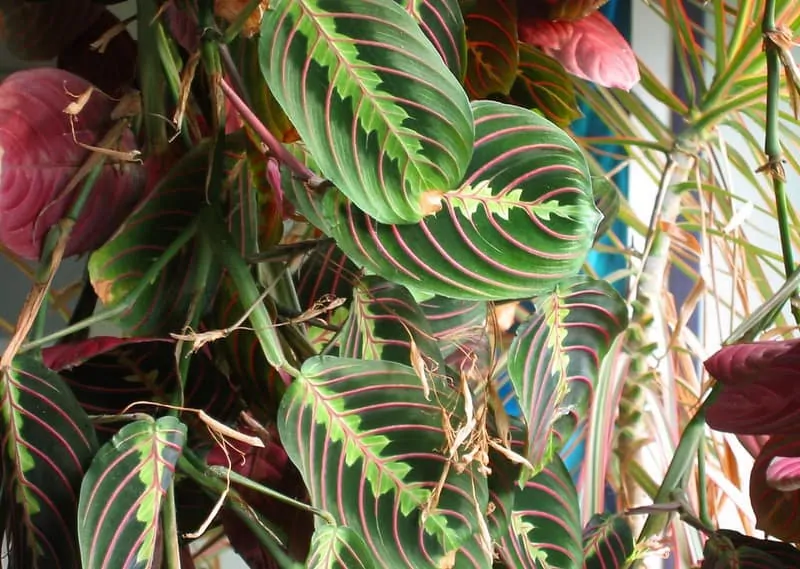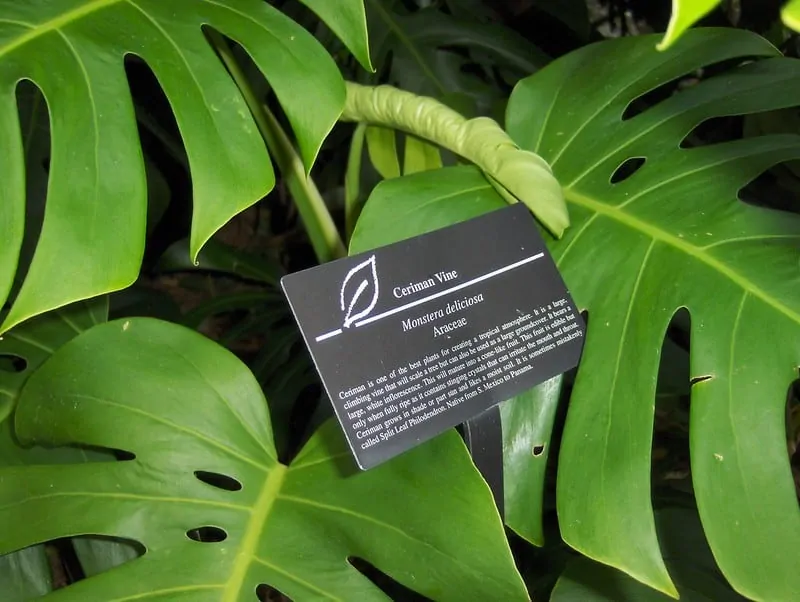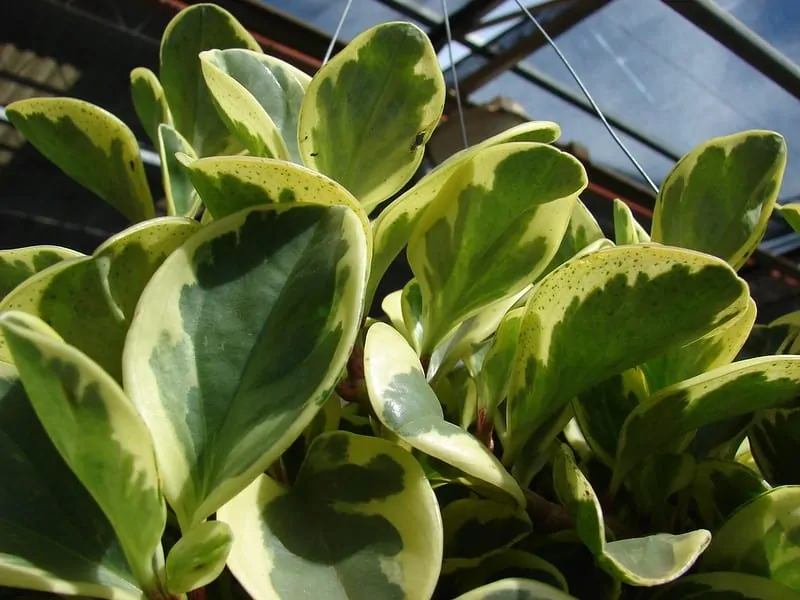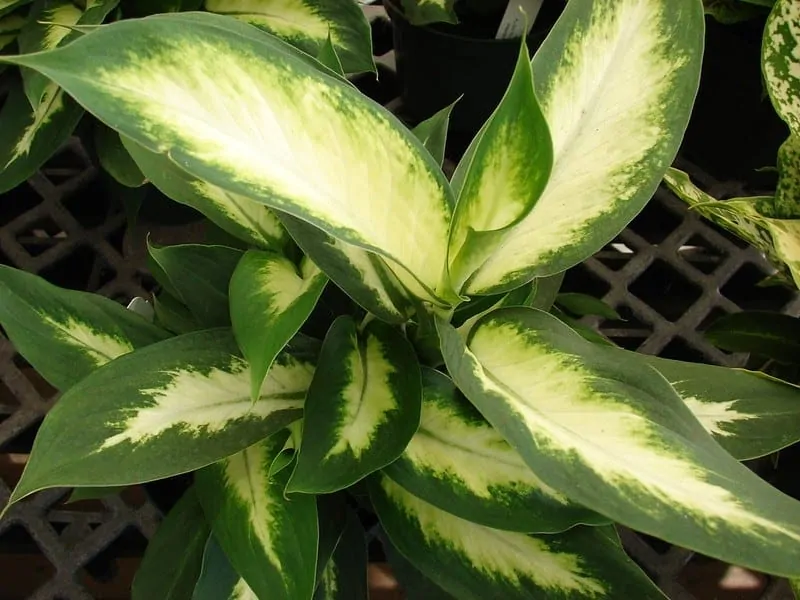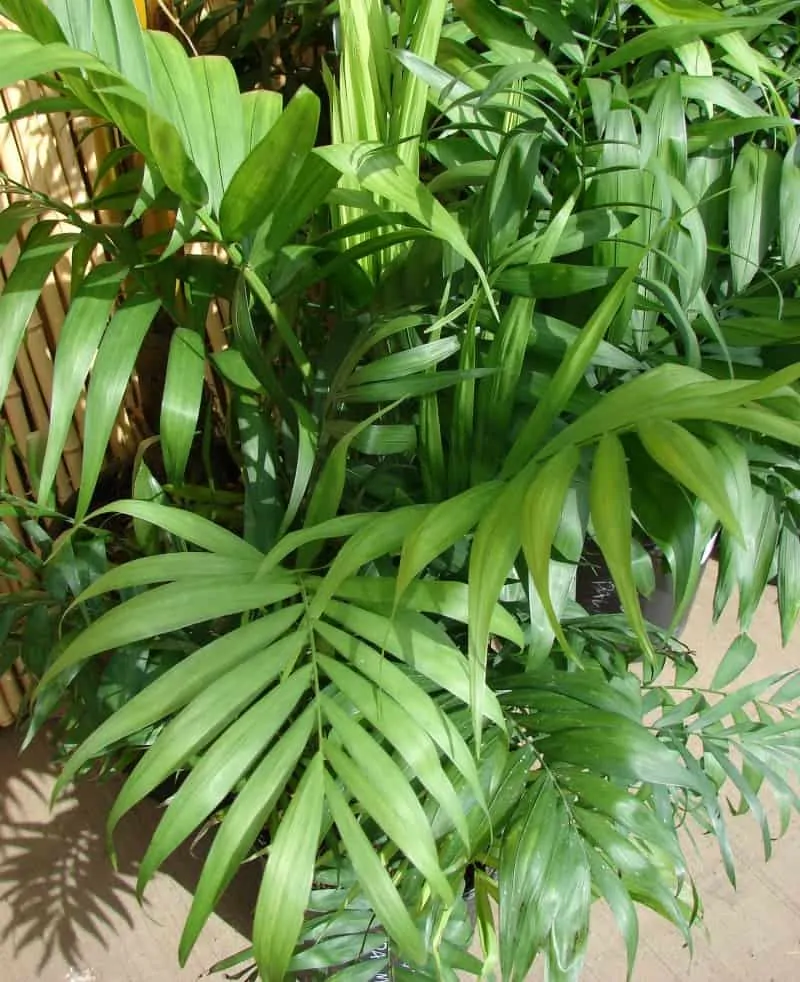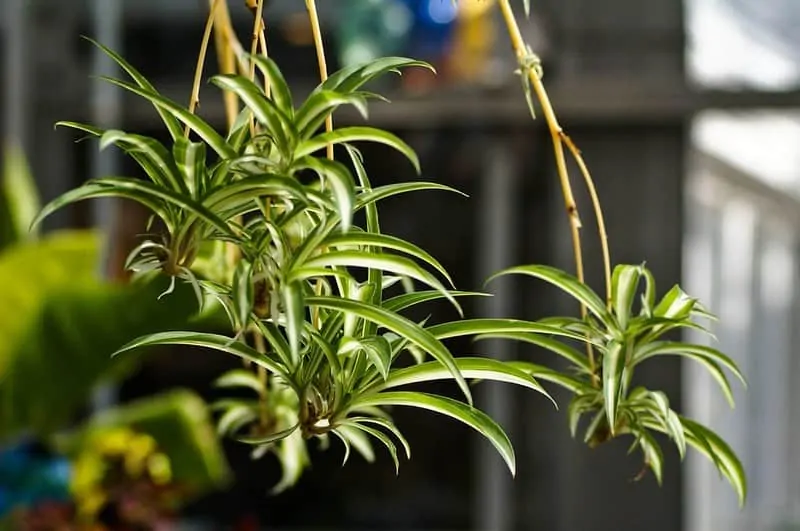A love of plants and a very poorly lit home is not an ideal combination, but it has known to happen. We want to come to the aid of green thumbers that don’t benefit from direct sunlight with this list of 12 plants that don’t need much sunlight to thrive.
1. Bromeliad – Bromeliaceae Family
Light Requirements:
Bright, indirect lightWater Requirements:
Medium - water weekly during summer and reduced in winter. Don’t let it sit in standing waterTemperature Range:
Ideal: 55 and 80 degrees Fahrenheit. Never expose to temps below 40 degrees FahrenheitNative to:
Tropical AmericasThere are as many types of bromeliads as there are countries where you can grow them but rest assured, they are all equally stunning! Also, know that depending on the genus and growth conditions, you might also get to admire their flowers. Fun fact – did you know that pineapples are part of the Bromeliaceae family?
2. Dracaena – Asparagaceae Family
Image by elnudomolesto license under CC BY 2.0
Light Requirements:
Low light - either semi-shade or filtered lightWater Requirements:
Low - Let the top soil dry before wateringTemperature Range:
Ideal: 65 and 78 degrees Fahrenheit. Never expose to temps below 55 degrees FahrenheitNative to:
Madagascar and the African continentBesides being one of the most interesting-looking plants that don’t need sunlight, the Dracaena is also good for your health. Several studies have shown that this popular houseplant can help clean up the air. Fun fact – the name Dracaena is the romanized form of drakaina which is the Ancient Greek for “female dragon”.
3. ZZ Plant – The Zamioculcas of the Araceae Family
Image by Forest and Kim Starr license under CC BY 2.0
Light Requirements:
Low to Bright Indirect LightWater Requirements:
Low - Water only when the soil has driedTemperature Range:
Ideal: 65 and 79 degrees Fahrenheit. Never expose to temps below 59 degrees FahrenheitNative to:
Eastern AfricaJust as the previous plant suggestion on this list, the ZZ plant also has air-purification properties but its main point of attraction is its look. Far from being a case of superficiality, the ZZ is indeed a stunner with its glossy foliage and very distinguishable and distinguished leaves. Fun fact – ornamental even just thanks to its leaves, the ZZ plant also blooms – so take good care of yours and you might just see a live flower!
4. Snake Plant – Sansevieria trifasciata of the Asparagaceae Family
Image by jalexartis Photography license under CC BY 2.0
Light Requirements:
Low Light Levels - Indirect but ConstantWater Requirements:
Very Low - Let the soil dry and water monthly or less during winterTemperature Range:
Ideal: 70 and 90 degrees Fahrenheit. Never expose to temps below 50 degrees FahrenheitNative to:
Tropical West AfricaNext up on the list of plants that don’t need sunlight we have a species of many names. Although commonly known as the Snake plant, this Sansevieria is also called Saint George’s sword, viper’s bowstring hemp, and even the mother-in-law’s tongue. We would take this as a compliment as the Sansevieria is a very decorative plant that will look great no matter where you place it and it is also very easy to care for and generally, one of the best plants for beginner gardeners too! For your information – keep it out of a pet’s reach – consuming it with lead to a gastrointestinal upset among cats and dogs.
5. Prayer Plant – Maranta leuconeura of the Marantaceae Family
Image by pfly license under CC BY-SA 2.0
Light Requirements:
Bright Indirect SunWater Requirements:
Medium - Water frequently during growth season but reduce watering during winterTemperature Range:
Ideal: 60 and 80 degrees Fahrenheit. Never expose to temps below 59 degrees FahrenheitNative to:
Brazil Tropical ForestsThe Maranta is an easy to grow plant, but not necessarily simple to care for as it has some very specific needs – for example, it thrives in humidity. Nonetheless, it is a visually interesting plant that will warm your heart with its small and delicate looking flowers. Interesting fact – the Maranta is commonly called the prayer plant because of its leaves that lie flat during the day but fold up like in prayer at night.
6. Pothos – The Devil’s Ivy of the Araceae Family
Image by Forest and Kim Starr license under CC BY 2.0
Light Requirements:
Bright Indirect LightWater Requirements:
Low - Let soil dry before wateringTemperature Range:
65 and 75 degrees Fahrenheit. Never expose to temps below 50 degrees FahrenheitNative to:
French PolynesiaAnother plant of many names, the Photos is incredibly easy to grow and it is one of the best plants that don’t need sunlight, a lot of water, or too much care, for that matter. It is also one of the most air-purifying plants you can get and will be great for anything from dorm rooms to offices. Fun fact – you can also grow pothos plants in water and dry soil.
7. Philodendron of the Araceae Family
Image by Joe Shlabotnik license under CC BY 2.0
Light Requirements:
Light ShadeWater Requirements:
Medium - Always keep the soil medium-moist but do not overwaterTemperature Range:
59 and 65 degrees Fahrenheit. Never expose to temps below 55 degrees FahrenheitNative to:
Rainforest in Central and South AmericaPhilodendron houseplants will thrive in indoor environments and are a great plant for both beginner gardeners and experienced green thumbs. Also, know that they can also be taken outside for a brief trip in the great outdoors – just as long as the weather allows it and if you place them in shaded spots. Interesting fact – the Philodendron is a very large genus of flowering plants and while there are over 480 known species at the moment, there are still many undescribed ones.
8. Peperomia – Radiator Plant of the Piperaceae Family
Image by Forest and Kim Starr license under CC BY 2.0
Light Requirements:
Morning and/or Filtered LightWater Requirements:
Low - Let the soil dry out before wateringTemperature Range:
65 and 85 degrees Fahrenheit. Never expose to temps below 30 degrees FahrenheitNative to:
Tropical and Subtropical RegionsHard to pronounce but easy to care for – the peperomia is a great option for anyone looking for plants that don’t need sunlight, too much water, or any fertilizer. Also, while it does not really flower, the peperomia has a more than interesting foliage that makes it highly decorative. Interesting fact – with over 1,000 known species in this genus, peperomias can differ so much in terms of foliage, color, texture, and everything that you will find it hard to believe that they are from the same family.
9. Dumb Cane – Dieffenbachia of the Araceae Family
Image by Forest and Kim Starr license under CC BY 2.0
Light Requirements:
Filtered or Indirect Light - Bright Light during winterWater Requirements:
Medium - Keep the soil moist but not overwateredTemperature Range:
Ideal: 65 and 75 degrees Fahrenheit. Never expose to temps below 55 degrees FahrenheitNative to:
Tropical RegionsMany of the plants we’ve presented so far are great options for people that are just getting their first houseplant(s). This is not the case with the dumb cane as, although it is not a difficult plant to care for, some of its varieties are extremely sensitive to the environmental conditions. Interesting fact – it’s common name of dumb cane (or mother-in-law’s tongue, as it is also known) stems from the fact that it can cause temporary speechlessness. Chewing on its leaves can irritate the membranes and cause mild tongue and throat swelling and inflammation.
10. Parlor Palm – Chamaedorea elegans of the Arecaceae Family
Image by Forest and Kim Starr license under CC BY 2.0
Light Requirements:
Bright, Indirect or Filtered LightWater Requirements:
Low - Prefer evenly moist soil - Do not overwater and keep on the dry sideTemperature Range:
Ideal: 65 and 80 degrees Fahrenheit. Never expose to temps below 50 degrees FahrenheitNative to:
Rainforests of Mexico and GuatemalaIt’s in the name! This plant will look great no matter where you decide to place it in your house – parlor or not – as it thrives in low light conditions and even cramped spaces. You should also know that it is a slow-growing plant and an excellent choice if you are looking for an air purifier too. Fun fact – the parlor palm was particularly loved in the Victorian Era as it grew both in the ‘exotic’ greenhouses of the royalty and in the cramped and unheated apartments of the common folk.
11. Spider Plant – Chlorophytum comosum of the Asparagaceae Family
Image by Valerie Everett license under CC BY-SA 2.0
Light Requirements:
Bright, Indirect LightWater Requirements:
Medium - Soil must be well-watered but not soggyTemperature Range:
65 and 90 degrees Fahrenheit. Never expose to temps below 35 degrees FahrenheitNative to:
Tropical and Southern AfricaAlthough native to tropical environments, the spider plant has now been naturalized and can be grown in most parts of the world, especially as a houseplant. Besides being easy to grow and care for, the NASA Clean Air Study also determined that they are a great way to clean the indoor air of common household toxins such as xylene and formaldehyde. Fun fact – the spider plant is also known as the spider ivy, the airplane plant, St. Bernard’s lily, and the hens and chickens.
12. Staghorn Fern – Platycerium of the Polypodiaceae Family
Light Requirements:
Bright, Indirect LightWater Requirements:
Medium - Must be well-watered but allow the soil to dry out in-between wateringsTemperature Range:
Ideal: 65 and 80 degrees Fahrenheit. Never expose to temps below 50 degrees FahrenheitNative to:
Tropical and Temperate Regions All Over the WorldProbably the strangest looking plant on this list, it is simple to tell what inspired the Staghorn fern’s name. Far less common than any of the other specimens we’ve shown so far, the Staghorn fern is becoming increasingly more popular as more and more people are interested in this “living art” plant. Besides being quite easy to care for, this plant is usually mounted on pieces of wood or baskets which makes it very easy to make it a decorative element. Interesting fact – all species of staghorn ferns (there are more than 15 known species) are epiphytic which means they grow on other plants and organisms, usually trees.

